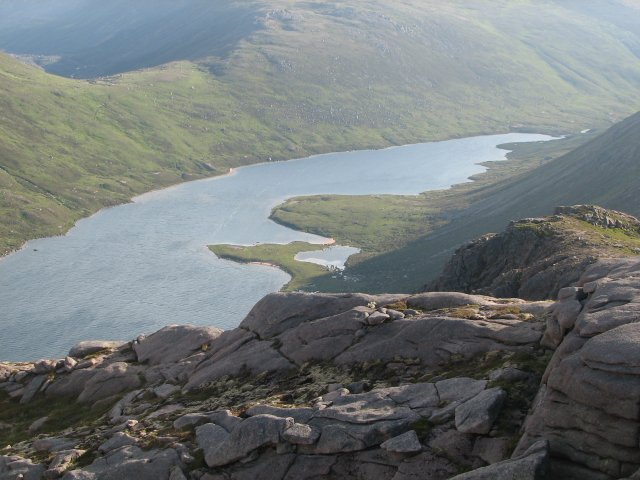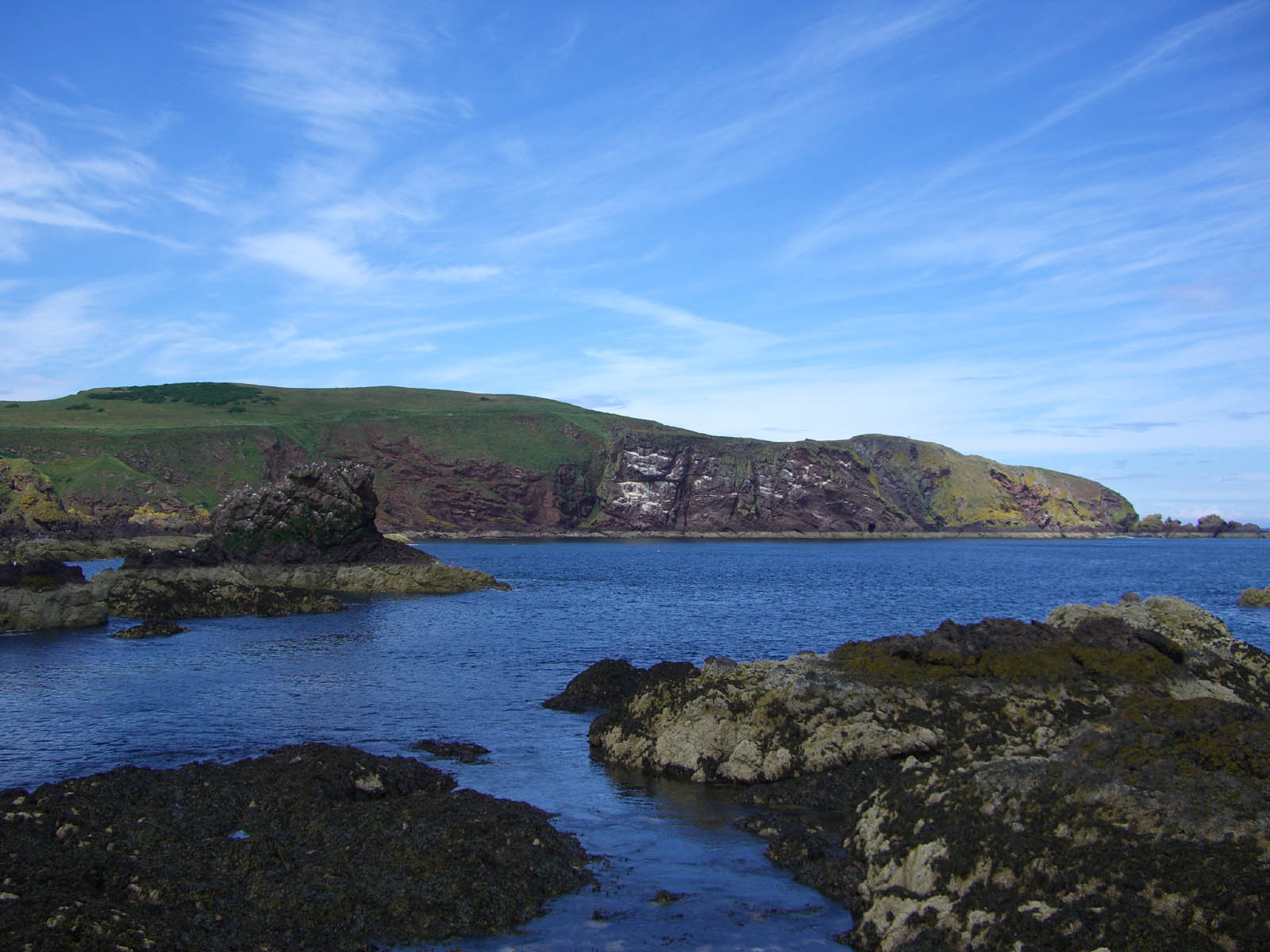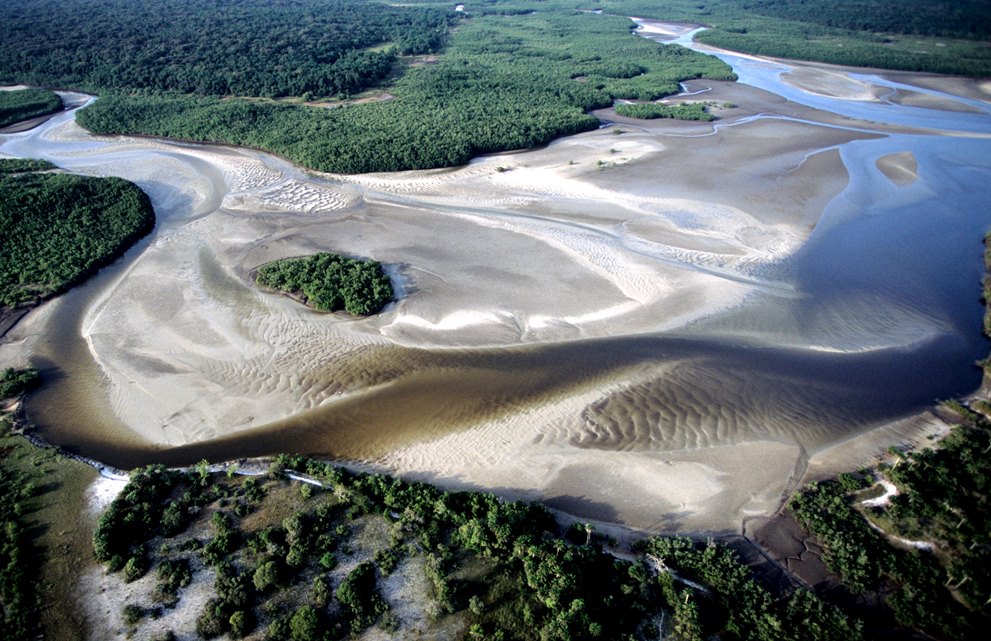|
Caithness And Sutherland Peatlands
The Caithness and Sutherland Peatlands is a large area of blanket bog and peatland, covering a number of disconnected regions across the historic counties of Caithness and Sutherland in the far north of Scotland, across an area known as the Flow Country. With a total area of 143,503 hectares, it is one of the largest recognised conservation sites in the UK, and is the largest Ramsar Site in Scotland. The area includes a wide variety of vegetation, and supports a diverse range of breeding waterfowl, including internationally important populations of greylag goose and dunlin, and nationally important populations of ten other waterfowl species. It is also important for several rare and scarce species of moss. Caithness and Sutherland Peatlands has been recognised as a wetland of international importance under the Ramsar Convention, and has been designated a Site of Special Scientific Interest, a Special Protection Area and a Special Area of Conservation A special area of conserva ... [...More Info...] [...Related Items...] OR: [Wikipedia] [Google] [Baidu] |
Loch Shin
Loch Shin (, ) is a loch in the Scottish North West Highlands. To the south is the town of Lairg. The loch, the largest in Sutherland, runs from the north-west to the south-east and is long. In the 1950s, the level of the loch was raised by over by the construction of Lairg Dam by Wimpey Construction as part of a hydro-electric scheme.White, p. 32 Around the loch there are mountain ranges; the Ben More Assynt in the west and Ben Klibreck () to the east. The loch drains to the North Sea by way of the short River Shin that feeds into the Dornoch Firth at Bonar Bridge. Three miles to the north of Lairg is a monument in remembrance of an early attempt to tame the Highlands. The area around the loch is a centre for sheep farming in Scotland Scotland is a Countries of the United Kingdom, country that is part of the United Kingdom. It contains nearly one-third of the United Kingdom's land area, consisting of the northern part of the island of Great Britain and more ... [...More Info...] [...Related Items...] OR: [Wikipedia] [Google] [Baidu] |
Moss
Mosses are small, non-vascular plant, non-vascular flowerless plants in the taxonomic phylum, division Bryophyta (, ) ''sensu stricto''. Bryophyta (''sensu lato'', Wilhelm Philippe Schimper, Schimp. 1879) may also refer to the parent group bryophytes, which comprise Marchantiophyta, liverworts, mosses, and hornworts. Mosses typically form dense green clumps or mats, often in damp or shady locations. The individual plants are usually composed of simple leaf, leaves that are generally only one cell thick, attached to a plant stem, stem that may be branched or unbranched and has only a limited role in conducting water and nutrients. Although some species have conducting tissues, these are generally poorly developed and structurally different from similar tissue found in vascular plants. Mosses do not have seeds and after fertilisation develop sporophytes with unbranched stalks topped with single capsules containing sporangium, spores. They are typically tall, though some species ar ... [...More Info...] [...Related Items...] OR: [Wikipedia] [Google] [Baidu] |
Ramsar Sites In Scotland
This list includes all Ramsar sites in Scotland. Ramsar sites are internationally recognised wetland sites, protected under the terms of the Ramsar Convention, which was developed and adopted by participating nations at a meeting in Ramsar, Mazandaran, Ramsar, Iran, on 2 February 1971. At the end of 2010, 160 states were contracting parties to the convention, and the worldwide total of sites was 1,920. The United Kingdom was one of 18 original signatories to the convention, and has since designated 168 Ramsar sites. 51 of these sites are within Scotland, including one site, the Upper Solway Flats and Marshes, which covers parts of both Scotland and England in the Solway Firth. The total area of all Ramsar sites in Scotland is approximately . All of Scotland's Ramsar sites form part of the European Natura 2000 network as either Special Protection Areas or Special Areas of Conservation, and many sites are further protected as Sites of Special Scientific Interest under UK legislation. ... [...More Info...] [...Related Items...] OR: [Wikipedia] [Google] [Baidu] |
North Atlantic Moist Mixed Forests
The North Atlantic moist mixed forests is a temperate broadleaf and mixed forest ecoregion in Northwestern Europe. It consists of maritime forests and heathlands on the western and northern coasts of Ireland, Scotland, and neighboring islands. The ecoregion has undergone major habitat loss. Location The North Atlantic moist mixed forests occur along the western and northern coasts of Ireland and Scotland, stretching from southwestern Ireland to the north coast of Scotland, and including the Hebrides, Shetland, Orkney, and Faroe islands. Flora Naturally-occurring plant communities include: * Hemiboreal pine forests, predominantly of Scots pine ''(Pinus sylvestris)'' with deciduous broadleaf trees. * Atlantic dwarf shrub heaths, composed of low shrubs, grasses, herbs, and mosses. Dry heaths are characterized by ling ''(Calluna vulgaris)'', bell heather ''(Erica cinerea)'', cross-leaved heath ''(Erica tetralix)'', and blaeberry ''(Vaccinium myrtillus)''. Wet heaths are cha ... [...More Info...] [...Related Items...] OR: [Wikipedia] [Google] [Baidu] |
National Nature Reserve (Scotland)
The national nature reserves (NNRs) of Scotland are areas of land or water designated under the Wildlife and Countryside Act 1981 as containing habitats and species of national importance. National nature reserves can be owned by public, private, community or voluntary organisations but must be managed to conserve their important habitats and species, as well as providing opportunities for the public to enjoy and engage with nature. There are currently 43 NNRs in Scotland, which cover , or less than 1.5% of the land area of Scotland. They range in size from Corrieshalloch Gorge at 7 ha to Mar Lodge Estate, which covers 29,324 ha. National nature reserve status is an accolade awarded to the best nature reserves in Scotland, and the selected sites provide examples of nationally or internationally important species and habitats. NNRs are intended to showcase Scotland's nature, and as well as being well managed for wildlife they must be managed to provide opportunities for ... [...More Info...] [...Related Items...] OR: [Wikipedia] [Google] [Baidu] |
Forsinard Flows National Nature Reserve
Forsinard Flows is a National nature reserve (Scotland), national nature reserve (NNR) covering much of the area surrounding Forsinard in the Highland (council area), Highland Subdivisions of Scotland, council area of Scotland. It lies at the heart of the Flow Country, a large, rolling expanse of peatland and wetland area of Caithness and Sutherland that makes up almost 5% of the world's blanket bog. The reserve is managed by the Royal Society for the Protection of Birds (RSPB), and is designated a Protected area#IUCN Protected Area Management Categories, Category II protected areas of Scotland, protected area by the International Union for Conservation of Nature. Much of the NNR overlaps with the designated area of the Caithness and Sutherland Peatlands Special Protection Area and Special Area of Conservation. Habitat The Flow Country is Europe's largest expanse of blanket bog, a unique type of habitat for many species. Blanket bogs form in cool, wet areas with acidic soils, as s ... [...More Info...] [...Related Items...] OR: [Wikipedia] [Google] [Baidu] |
Joint Nature Conservation Committee
The Joint Nature Conservation Committee (JNCC) is the public body that advises the Government of the United Kingdom and devolved administrations on UK-wide and international nature conservation. Originally established under the Environmental Protection Act 1990, JNCC was reconstituted by the Natural Environment and Rural Communities Act 2006. JNCC is led by the Joint Committee, which brings together members from the nature conservation bodies for England, Scotland, Wales and Northern Ireland and independent members appointed by the Secretary of State for the Environment, Food and Rural Affairs under an independent chair. Support is provided to the committee by a company set up and controlled by the Committee solely for that purpose. The company employs around 130 people. They bring together scientific and technical expertise, extensive knowledge of policy at global, European and national levels and skills in working with other organisations. Staff are based in offices in Peterb ... [...More Info...] [...Related Items...] OR: [Wikipedia] [Google] [Baidu] |
Special Area Of Conservation
A special area of conservation (SAC) is defined in the European Union's Habitats Directive (92/43/EEC), also known as the ''Directive on the Conservation of Natural Habitats and of Wild Fauna and Flora''. They are to protect the 220 habitats and approximately 1,000 species listed in annex I and II of the directive which are considered to be of European interest following criteria given in the directive. They must be chosen from the Site of Community Importance, sites of Community importance by the member states and designated SAC by an act assuring the conservation measures of the natural habitat. SACs complement special protection areas and together form a network of protected sites across the European Union called Natura 2000. This, in turn, is part of the Emerald network of Area of Special Conservation Interest, Areas of Special Conservation Interest (ASCIs) under the Convention on the conservation of European wildlife and natural habitats, Berne Convention. Assessment methodol ... [...More Info...] [...Related Items...] OR: [Wikipedia] [Google] [Baidu] |
Special Protection Area
A special protection area (SPA) is a designation under the European Union Directive on the Conservation of Wild Birds. Under the Directive, Member States of the European Union (EU) have a duty to safeguard the habitats of migratory birds and certain particularly threatened birds. Together with special areas of conservation (SACs), the SPAs form a network of protected sites across the EU, called Natura 2000. Each SPA has an EU code – for example the North Norfolk Coast SPA has the code ''UK9009031''. In the United Kingdom As at 21 September 2006, there were 252 classified SPAs and 12 proposed SPAs in England, Scotland, Wales and Northern Ireland. The Conservation (Natural Habitats etc.) Regulations 1994 implement the terms of the Directive in Scotland, England and Wales. In Great Britain, SPAs (and SACs) designated on land or in the intertidal area are normally also notified as Sites of Special Scientific Interest (SSSIs), and in Northern Ireland as Areas of Special Scientif ... [...More Info...] [...Related Items...] OR: [Wikipedia] [Google] [Baidu] |
Site Of Special Scientific Interest
A Site of Special Scientific Interest (SSSI) in Great Britain, or an Area of Special Scientific Interest (ASSI) in the Isle of Man and Northern Ireland, is a conservation designation denoting a protected area in the United Kingdom and Isle of Man. SSSI/ASSIs are the basic building block of site-based nature conservation legislation and most other legal nature/geological conservation designations in the United Kingdom are based upon them, including national nature reserve (United Kingdom), national nature reserves, Ramsar Convention, Ramsar sites, Special Protection Areas, and Special Area of Conservation, Special Areas of Conservation. The acronym "SSSI" is often pronounced "triple-S I". Selection and conservation Sites notified for their Biology, biological interest are known as Biological SSSIs (or ASSIs), and those notified for geological or Physical geography, physiographic interest are Geological SSSIs (or ASSIs). Sites may be divided into management units, with some a ... [...More Info...] [...Related Items...] OR: [Wikipedia] [Google] [Baidu] |
Ramsar Convention
The Ramsar Convention on Wetlands of International Importance Especially as Waterfowl Habitat is an international treaty for the conservation and sustainable use of Ramsar site, Ramsar sites (wetlands). It is also known as the Convention on Wetlands. It is named after the city of Ramsar, Mazandaran, Ramsar in Iran, where the convention was signed in 1971. Every three years, representatives of the contracting parties meet as the Ramsar Convention#Conference of the Contracting Parties, Conference of the Contracting Parties (COP), the policy-making organ of the wetland conservation, convention which adopts decisions (site designations, resolutions and recommendations) to administer the work of the convention and improve the way in which the parties are able to implement its objectives. In 2022, COP15 was held in Montreal, Canada. List of wetlands of international importance The list of wetlands of international importance included 2,531 Ramsar site, Ramsar sites in Februa ... [...More Info...] [...Related Items...] OR: [Wikipedia] [Google] [Baidu] |
List Of Ramsar Wetlands Of International Importance
Ramsar sites are protected under by the Ramsar Convention, an international treaty for the conservation and sustainable use of wetlands, recognizing the fundamental ecological functions of wetlands and their economic, cultural, scientific, and recreational value. The convention establishes that "wetlands should be selected for the list on account of their international significance in terms of ecology, botany, zoology, limnology or hydrology." Over the years, the Conference of the Contracting Parties has adopted more specific criteria interpreting the convention text. The Ramsar List organizes the Ramsar sites according to the contracting party that designated each to the list. Contracting parties are grouped into six "regions": Africa, Asia, Europe, Latin American and the Caribbean, North America, and Oceania. , 171 states have acceded to the convention and designated 2,531 sites to the list, covering ; one other state has acceded to the convention but has yet to designate any s ... [...More Info...] [...Related Items...] OR: [Wikipedia] [Google] [Baidu] |





